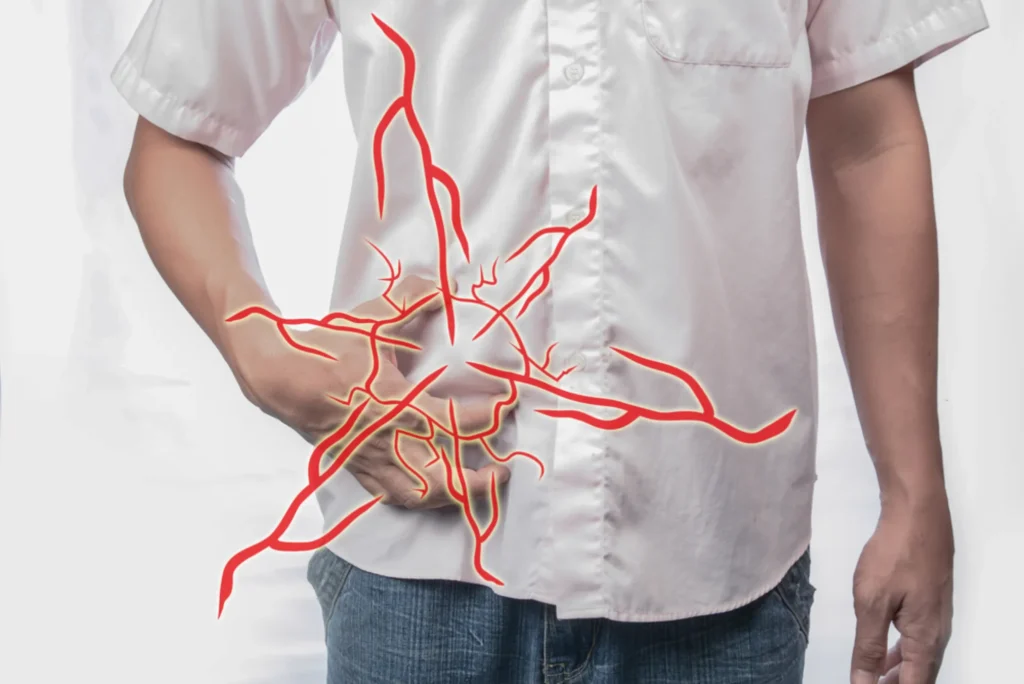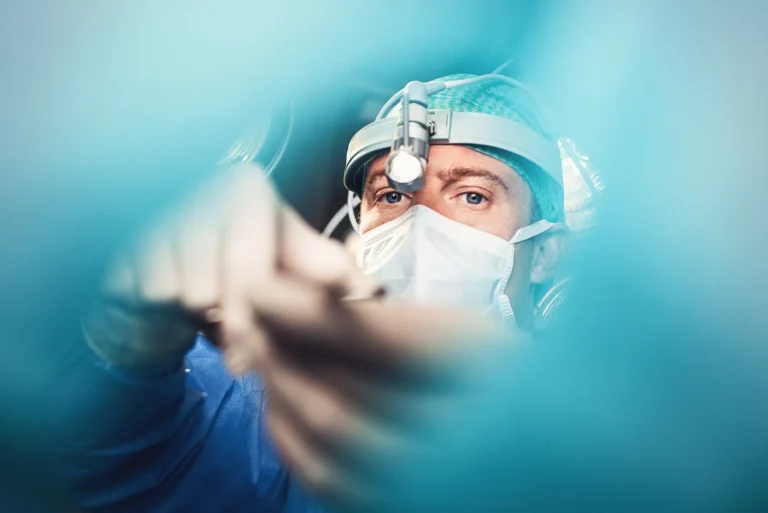Hernias are a common concern for gym-goers, occurring when organs or fatty tissue protrude through weak spots in surrounding muscles or connective tissue. In the dynamic environment of the gym, where heavy lifting and intense workouts are routine, the risk of hernia is heightened. Understanding how to mitigate this risk is essential for maintaining a safe and effective fitness regimen.
Understanding the Risks
The gym environment introduces several factors that can significantly increase the risk of hernia. Among these factors, the nature of gym activities, including heavy lifting, intense cardio, and the utilization of various exercise machines, places considerable strain on the body.
One of the primary concerns regarding hernia risk in the gym is the potential for overexertion. When individuals push themselves beyond their physical limits or attempt exercises with improper form, they put undue stress on muscles and connective tissues, creating vulnerabilities that can lead to herniation. This risk is particularly pronounced in activities such as weightlifting, where the use of heavy weights without proper technique can strain the abdominal wall and increase the likelihood of hernia development.
Moreover, certain Hernia in gym equipment, including the “gym running machine,” poses specific challenges that can heighten hernia risk if not used correctly. For instance, excessive use or misuse of the treadmill can place significant strain on the abdominal muscles, potentially leading to herniation over time.
Furthermore, factors such as inadequate warm-up, insufficient rest between workouts, and improper hydration can exacerbate hernia risk in the gym setting. Without proper preparation and recovery strategies, individuals are more susceptible to muscle fatigue, strain, and injury, all of which contribute to the development of hernias.
Preventive Measures
Engaging in proper warm-up techniques is essential as a preventive measure against hernia in the gym. A comprehensive warm-up routine serves to prepare the body for physical activity by gradually increasing heart rate, improving blood circulation, and enhancing muscle flexibility. Incorporating dynamic stretches and light cardio exercises into your warm-up regimen helps to loosen muscles and joints, reducing the risk of strain and injury during subsequent workout sessions. By dedicating adequate time to warming up before engaging in strenuous activities, individuals can effectively prime their bodies for exercise and minimize the likelihood of hernia occurrence.
Correct Lifting Techniques
Adhering to correct lifting techniques is paramount in preventing hernias while engaging in weightlifting or resistance training at the gym. When lifting weights, it is crucial to utilize proper form and mechanics to minimize stress on the body, particularly the abdominal region. Key principles of correct lifting include bending the knees and using the legs to lift rather than relying solely on the back, maintaining a straight and stable spine throughout the movement, and avoiding abrupt or jerky motions that can strain muscles and ligaments. By practicing safe lifting techniques and gradually increasing weights over time in a controlled manner, individuals can effectively strengthen muscles while reducing the risk of hernia.
Strengthening Core Muscles
A proactive approach to hernia prevention involves strengthening the core muscles, which play a critical role in providing stability and support to the body during physical activity. By incorporating targeted core exercises into their workout routines, such as planks, leg raises, and abdominal crunches, individuals can strengthen the muscles of the abdomen, lower back, and pelvis, thereby reducing the likelihood of hernia occurrence. Building a strong core not only improves athletic performance and posture but also helps to distribute stress more evenly throughout the body, minimizing the risk of excessive strain on any one muscle group or tissue. By prioritizing core strength as part of their fitness regimen, individuals can fortify their bodies against hernia and other potential injuries.

Using Gym Equipment Safely
Proper usage of gym equipment is essential in preventing hernias and other workout-related injuries. When utilizing machines such as the “gym running machine” it is crucial to familiarize oneself with the equipment’s settings and safety features to ensure a safe and effective workout experience. Individuals should adjust the machine to their appropriate fitness level, avoiding excessive speed or resistance that may place undue strain on the abdominal muscles. Additionally, maintaining proper posture and alignment while using gym equipment helps to minimize the risk of injury and hernia occurrence. By following manufacturer guidelines and exercising caution when using gym equipment, individuals can mitigate the risk of hernia and enjoy a safer and more productive workout session.
Lifestyle Considerations
Maintaining a balanced diet and staying adequately hydrated are essential lifestyle considerations that contribute to hernia prevention in the gym. A diet rich in nutrients, including lean proteins, fruits, vegetables, and whole grains, supports muscle health and overall physical well-being. Proper nutrition provides the body with the energy and nutrients necessary for optimal performance during workouts while also promoting muscle recovery and repair post-exercise. Additionally, adequate hydration is crucial for maintaining proper muscle function, joint lubrication, and overall hydration status. By drinking water regularly throughout the day and replenishing fluids lost during exercise, individuals can prevent dehydration and reduce the risk of muscle cramps, fatigue, and injury. Incorporating nutritious foods and ample fluids into one’s daily routine supports overall health and helps to minimize the risk of hernia in the gym.
Listening to Your Body
Listening to your body’s cues and signals is another important lifestyle consideration for hernia prevention. Paying attention to sensations of pain, discomfort, or fatigue during workouts can help individuals identify potential warning signs of overexertion or injury. If experiencing any discomfort or unusual symptoms, it is crucial to stop exercising immediately and seek guidance from a qualified healthcare professional. Ignoring these signals and pushing through pain can exacerbate existing injuries or lead to new ones, including hernia. Rest and recovery are integral parts of any fitness regimen, allowing the body time to repair and rebuild muscles for optimal performance. By respecting their body’s limits and prioritizing rest when needed, individuals can reduce the risk of hernia and other workout-related injuries.
Consulting Fitness Experts
Seeking professional guidance from certified fitness experts, such as personal trainers, can provide invaluable support in hernia prevention and overall fitness management. Personal trainers possess the knowledge and expertise to design customized workout programs tailored to individual needs, goals, and fitness levels. They can educate clients on proper exercise techniques, form, and progression, helping to minimize the risk of injury, including hernia, during workouts. Additionally, personal trainers can offer motivation, encouragement, and accountability, empowering individuals to adhere to their fitness goals and maintain a consistent exercise routine. By partnering with a qualified fitness professional, individuals can receive personalized guidance and support to optimize their gym experience and reduce the likelihood of hernia occurrence.

Medical Advice and Check-Ups
Regular medical check-ups and consultations with healthcare professionals, such as those available at Aster Clinic Golden Sand, are essential for maintaining overall health and well-being, as well as for hernia prevention. Healthcare providers can assess individuals’ medical history, identify any underlying health conditions or risk factors that may predispose them to hernia, and offer personalized recommendations for prevention and management. Additionally, healthcare professionals can provide guidance on safe exercise practices, injury prevention strategies, and appropriate treatment options for any existing conditions that may impact fitness activities. By prioritizing regular medical check-ups and seeking professional advice from qualified healthcare providers, individuals can take proactive steps to safeguard their health and reduce the risk of hernia and other workout-related injuries.
Professional Guidance
Consulting Fitness Experts
Seeking guidance from certified fitness professionals, such as personal trainers, can provide valuable insights into safe and effective workout practices. These experts can tailor exercise plans to individual needs, minimizing the risk of hernia and optimizing overall fitness outcomes.
Medical Advice and Check-Ups
Regular medical check-ups are essential for monitoring overall health and identifying any potential risk factors for hernia. “Aster Clinic Golden Sand” offers professional medical advice and support, assisting individuals in developing personalized strategies to prevent hernia and maintain optimal physical well-being.
Preventing hernia in the gym requires a multifaceted approach that encompasses proper warm-up techniques, correct lifting practices, core strengthening exercises, safe equipment usage, balanced nutrition, hydration, and professional guidance. By prioritizing safety and incorporating these preventive measures into their fitness routines, individuals can minimize the risk of hernia and pursue their health and wellness goals with confidence.











